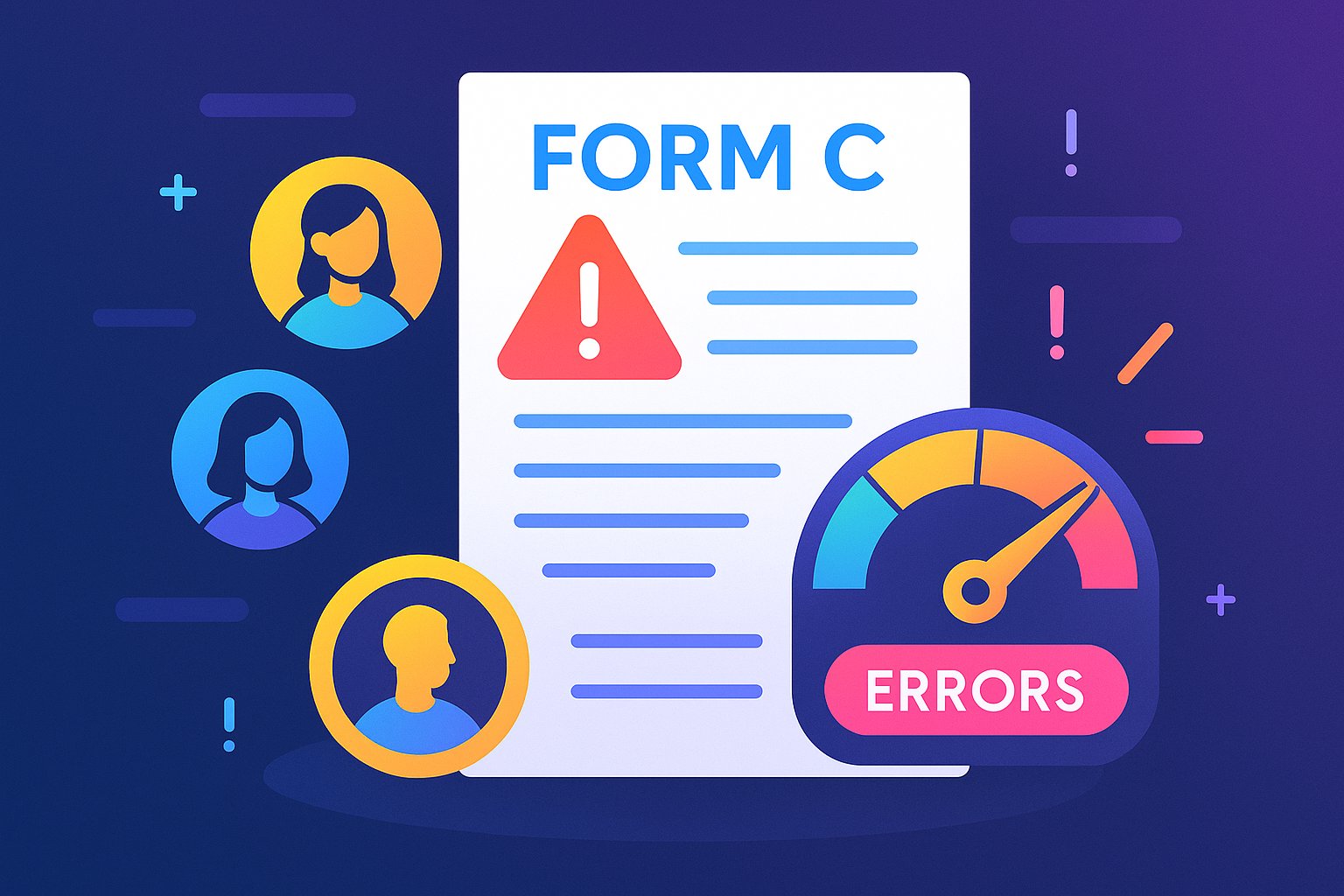When it comes to accessing public capital markets without embarking on a full-blown IPO, Regulation A+ (Reg A+) and Regulation Crowdfunding (Reg CF) have become powerful tools in a founder’s arsenal. Both frameworks were born from the Jumpstart Our Business Startups (JOBS) Act, designed to help emerging companies tap new pools of investors. While they share the same legislative ancestry, Reg A+ and Reg CF differ significantly in their legal structures, offering sizes, disclosure requirements, investor eligibility rules, and ongoing reporting obligations. Understanding these legal distinctions is crucial for founders seeking the optimal path for equity fundraising. This article unpacks the essential differences you need to know, offering strategic insights to guide your capital-raising journey.
Unveiling Form C-AR’s Role in Crowdfunding Accountability
At its core, Form C-AR embodies the promise made during a Reg CF raise: an honest, transparent dialogue with investors. Issuers initially file a Form C to launch their funding campaign, detailing business plans, risk factors, and financial statements. Once the offering closes, the commitment extends into the future via Form C-AR. This annual filing updates key metrics—revenue figures, expense breakdowns, new contracts, and leadership changes—ultimately offering a snapshot of the company’s evolution since the initial raise. In doing so, Form C-AR empowers investors to assess progress, gauge management performance, and make informed decisions about follow-on investments or secondary market sales.
Tracing the Evolution: From Form C to C-AR
The advent of Reg CF in 2016 marked a seismic shift in how startups access capital, but it also introduced a novel reporting obligation. Originally, Form C filings sufficed to launch a campaign, while issuers lodged interim updates through voluntary communications. The SEC soon recognized the need for standardized, periodic disclosures and codified Form C-AR as a mandatory annual update. Today, the regulatory framework requires issuers to file Form C-AR within 120 days of fiscal year-end, replacing the ad hoc approach with a predictable cadence. This evolution has enhanced investor confidence, streamlined SEC oversight, and fostered consistent corporate governance practices among crowdfunding issuers.
Decoding the Components: What Lives Inside a Form C-AR
While the exact structure of Form C-AR may evolve with SEC guidance, its core sections remain consistent. The document typically begins with a business overview that revisits the company’s mission, market positioning, and strategic goals. Following this narrative, the financial statements—balance sheet, income statement, and cash flow statement—take center stage, requiring at least reviewed, and in many cases audited, data depending on the funds raised. Next, management’s discussion and analysis (MD&A) offers qualitative context, clarifying variances in revenue, shifts in expense categories, and the impact of one-time events. Finally, the form requires disclosure of material events: new partnerships, legal proceedings, key hires or departures, and any changes in risk factors. Each component plays a vital role in constructing a holistic view of the company’s health and prospects.
Timing Is Everything: Deadlines and Filing Windows
The SEC mandates that a Form C-AR be filed no later than 120 days after the issuer’s fiscal year-end. For companies operating on a calendar year, this typically translates to a March 30th deadline. Missing this window can trigger enforcement actions and investor dissatisfaction, potentially undermining the goodwill built during the initial raise. Some issuers choose to align their fiscal year-end with the closing date of their Reg CF offering, effectively granting themselves a full year before the first C-AR is due. Others adopt a June or September year-end, balancing operational cycles with reporting obligations. Regardless of approach, meticulous calendar management and early planning around audits and internal reviews are essential to avoid last-minute scrambles.
The Watchful Eye: Why Form C-AR Matters to Investors
Investors in Reg CF campaigns span the spectrum from venture capitalists to everyday enthusiasts seeking a stake in the next big idea. Across this diverse audience, Form C-AR serves a unifying purpose: it delivers consistent, comparable data that empowers investors to track performance, benchmark against peers, and validate management’s stewardship of their capital. In the absence of traditional public market filings, this annual report becomes the primary artifact for due diligence, informing both existing backers and potential secondary market participants. Furthermore, issuing a comprehensive, timely C-AR signals to the market that the company values transparency—an essential attribute for attracting larger institutional investment or preparing for future Regulation A+ or Reg D rounds.
Avoiding Pitfalls: Common Compliance Stumbling Blocks
Despite its apparent simplicity, Form C-AR compliance can trip up unwary issuers. A frequent misstep lies in underestimating the scope of financial statements required; for companies that raised the maximum Reg CF amount ($5 million), audited statements may be mandatory, a cost and timeline consideration that founders sometimes overlook. Equally common is the failure to adequately document “material events.” Not every product launch or small partnership merits formal inclusion, but significant pivots, major customer wins, or leadership changes should be disclosed. Ambiguous language or incomplete explanations can prompt SEC comment letters, delaying the filing’s effective date and sowing investor doubt. Finally, siloed communication between finance, legal, and operations teams can lead to inconsistencies—ensuring a coordinated, cross-functional approach is critical.
Strategies for Seamless Filing: Best Practices Revealed
A proactive stance toward Form C-AR can transform it from a burdensome obligation into a strategic asset. Begin by mapping out a reporting calendar immediately after your fiscal year-end, working backward to schedule financial close processes, external audits, and draft review cycles. Engage auditors early to confirm the scope of work—knowing whether a review or full audit is required saves time and avoids surprises. Develop standardized templates and checklists that guide the collection of business updates, risk factor reassessments, and MD&A inputs. Regularly brief your board or advisory committee on upcoming C-AR requirements, enlisting their insights and ensuring executive alignment. Finally, consider engaging a securities counsel with Reg CF expertise; their guidance can streamline the filing process, preempt SEC questions, and uphold investor confidence.
Leveraging Technology: Tools That Simplify Your C-AR Journey
Modern reporting platforms and accounting software can dramatically reduce the grunt work associated with Form C-AR preparation. Cloud-based financial management systems automate the generation of core statements, while document management tools track version history and stakeholder feedback. Some specialized Reg CF portals now integrate C-AR submission capabilities, managing SEC filing logistics and even distributing the report directly to your investor base. Collaboration features allow legal, finance, and executive teams to annotate drafts in real time, flagging potential disclosures that might otherwise slip through the cracks. Embracing these technologies not only accelerates the filing process but also fosters a culture of continuous compliance—a competitive advantage as crowdfunding regulations continue to tighten.
Looking Ahead: The Future of Crowdfunding Reporting
The SEC has signaled ongoing interest in refining Reg CF disclosures, potentially raising fundraise limits and enhancing reporting standards. Industry advocates are urging the agency to harmonize Form C-AR requirements with those of Regulation A+ (Form 1-K) to reduce issuer burden while preserving investor protections. As the crowdfunding ecosystem matures, secondary markets for Reg CF issuers may emerge more robustly, increasing the demand for timely, high-quality annual reports. Founders who anticipate these trends—by adopting best-in-class reporting practices today—will be well-positioned to capitalize on enhanced liquidity and new avenues for capital-raising in the near future.
Charting the Path Forward with Confidence
Form C-AR is far more than a compliance exercise; it is a cornerstone of trust between crowdfunding issuers and their investors. By understanding its legal underpinnings, mastering the components, and instituting disciplined processes, founders transform an annual obligation into a platform for accountability and credibility. Whether preparing for a $100,000 raise or a multi-million-dollar Reg CF campaign, recognizing the significance of Form C-AR ensures that every investor receives the clear, timely information they deserve. Armed with strategic foresight, cross-functional collaboration, and the right technology toolkit, your company can deliver standout annual reports that reinforce investor confidence and pave the way for future fundraising triumphs.




